The Falklands penguins that would not explode
- Published
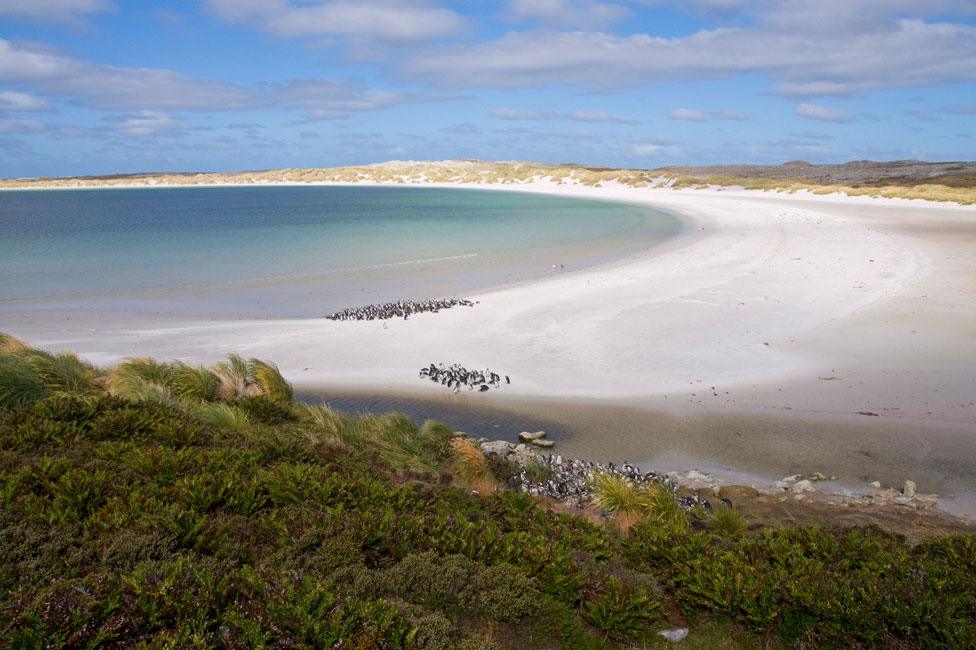
The minefields laid in the Falkland Islands were intended to kill or maim British soldiers, but over the last 35 years they have become de facto nature reserves for penguins. For better or worse, however, the time has now come for their home to be demined, reports Matthew Teller.
I'm following a crunching gravel path leading up over a headland.
To one side stretches a sweeping curve of white sand, backed by tussocky dunes, the coarse grass mixed with a low-growing plant bearing tartly sweet red berries that the locals call diddle-dee.
But it's the sound that startles. Overlaying the booming ocean is a comical honking noise coming from thousands of Magellanic penguins. One, guarding its burrow beside the path, stretches its neck up at me, then lets out an ear-splitting, wing-waggling bray of displeasure.
I can see why these penguins are known locally as jackasses.
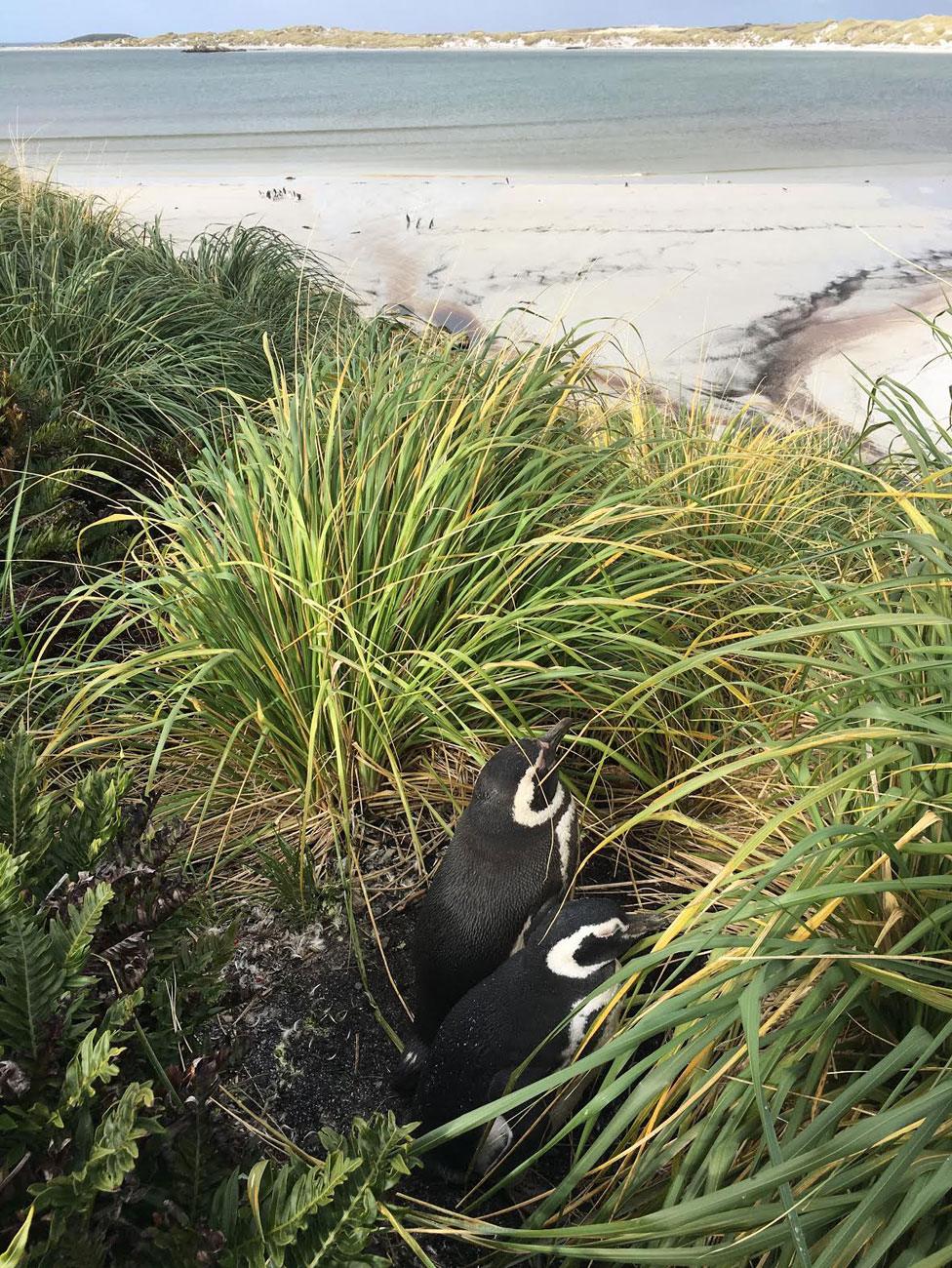
The beach, also dotted with waddling clusters of Gentoo penguins, looks tempting, but between me and the birds stretches a barbed-wire fence marked with signs warning of danger.
This is Yorke Bay, just outside Stanley, capital of the Falkland Islands. Once a popular leisure beach, it was here, at 04:30 on the morning of 2 April 1982, that Argentine naval commandos landed, marking the start of a full-scale invasion.
By the time British forces retook Stanley 74 days later, 907 people had lost their lives, most of them Argentine conscripts.
During the occupation, one of the Argentine military's first actions was to lay tens of thousands of land mines across the uncultivated countryside to slow a British counter-attack - especially a seaborne attack via the beaches around Stanley, including Yorke Bay.
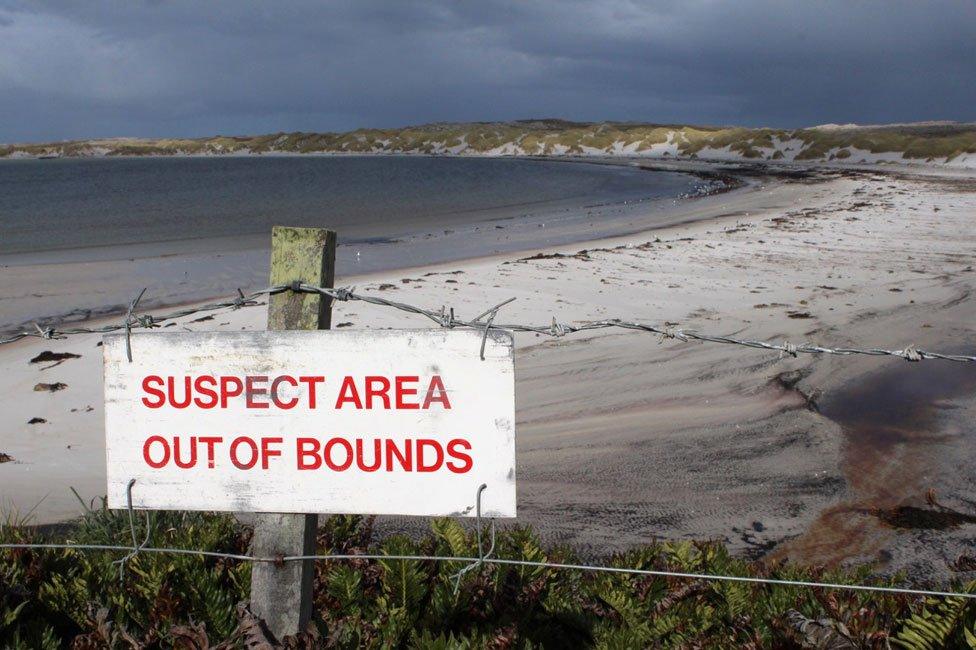
Fortunately, the landmines aren't a problem for the penguins - at least, not the little Magellanics and Gentoos of Yorke Bay.
"They don't seem to be heavy enough to set them off," says Esther Bertram, chief executive officer of Falklands Conservation.
Behind their fences, shielded from human encroachment, the penguins have had decades of peace and quiet in their minefield. Native flora has regrown around them.
"Natural systems have returned to not quite a pristine state, but a state where you've reached climax communities in certain parts," says Paul Brickle, director of the South Atlantic Environmental Research Institute.
"The mines are horrible things, and very difficult to remove - you essentially have to get on your hands and knees to do that, remove bits of earth and dunes, and disrupt the ecosystem. There's a bit of a trade-off in thinking: what are the benefits of having them removed?" he asks.
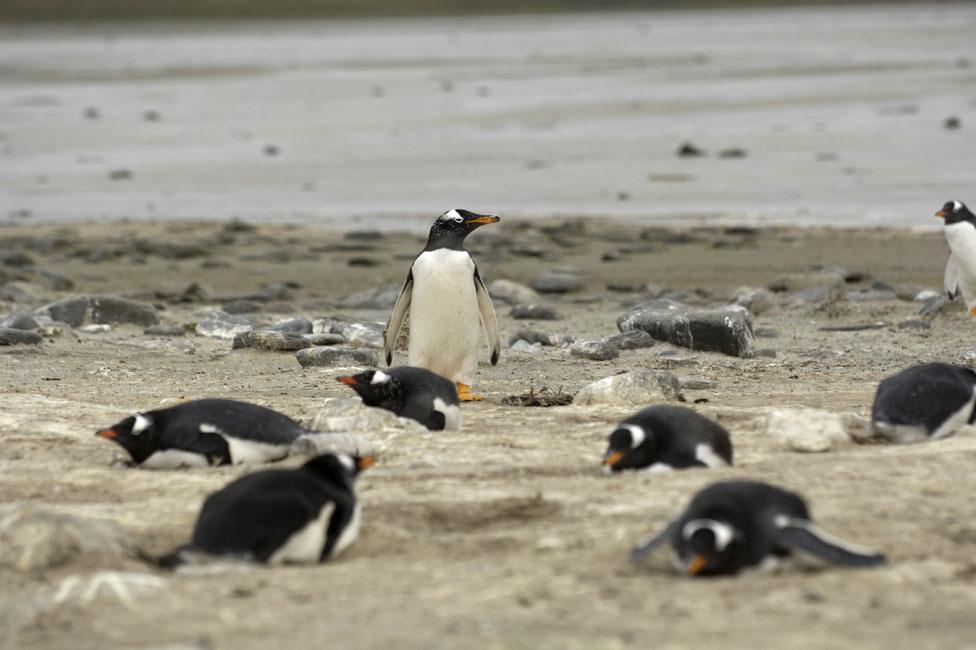
Initially at least, not everyone in the islands' tiny, close-knit population of 3,000 was supportive.
"Falkland Islanders weren't enthused by the idea, to put it bluntly," says Barry Elsby, a member of the Falklands Legislative Assembly.
"We would rather have left the minefields as they were. They are all clearly marked, clearly fenced. No civilian has ever been injured. We said to the British government, 'Don't spend the money here, go to some other country where they have a much greater need to free up farming land.'"
"Unfortunately," Elsby adds, "the British government have signed up to the Ottawa convention, which puts a duty on them to do this."
The 1997 Ottawa Mine Ban Treaty compels signatories - which include the UK - to clear minefields in territory under their control.
So whatever the locals - and the penguins - thought, the mines had to go.
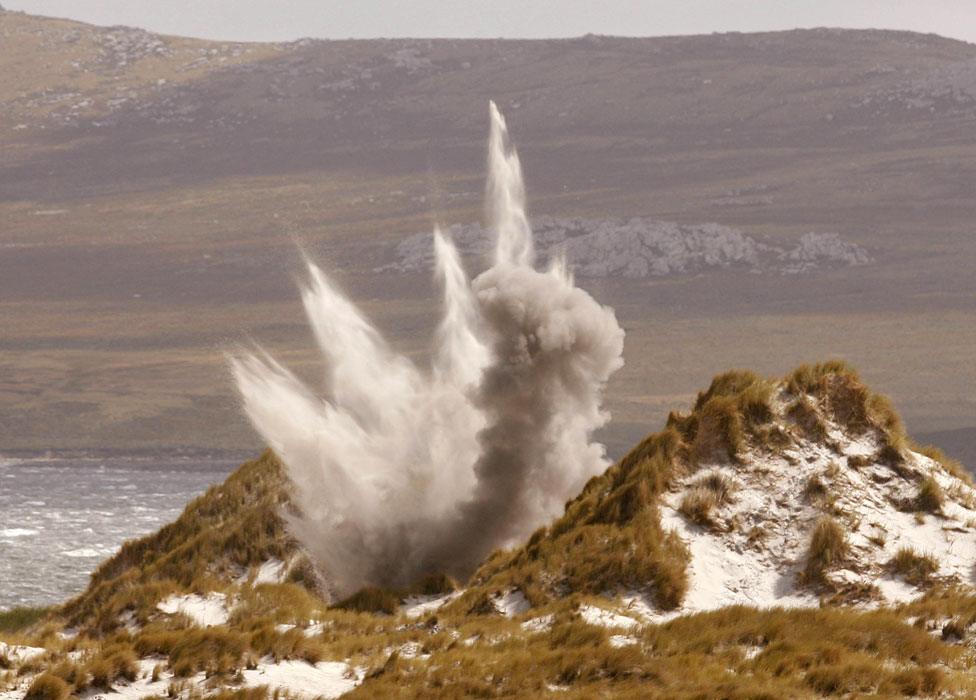
A mine is detonated near Stanley
Since 2009 the British government has spent tens of millions of pounds on mine-clearance in the Falklands. Guy Marot of the Falkland Islands Demining Programme Office oversees a team of largely Zimbabwean operatives, highly valued for their long experience of demining in their home country and further afield.
He takes me out to one of the clearance sites. In a setting of wide open moorland, battling gales and driving rain, demining specialist Innocent Mudzamiri, fully kitted out with protective clothing and visor, explains how he approaches his job, lying prone in the boggy peat, painstakingly clearing dirt from around devices that could blow up in his face.
"It's just caution. You have to do it gently, so that you don't disturb the mine," he says.
"Your mind must be free - no thinking of home, or thinking whatever, but just concentrate."
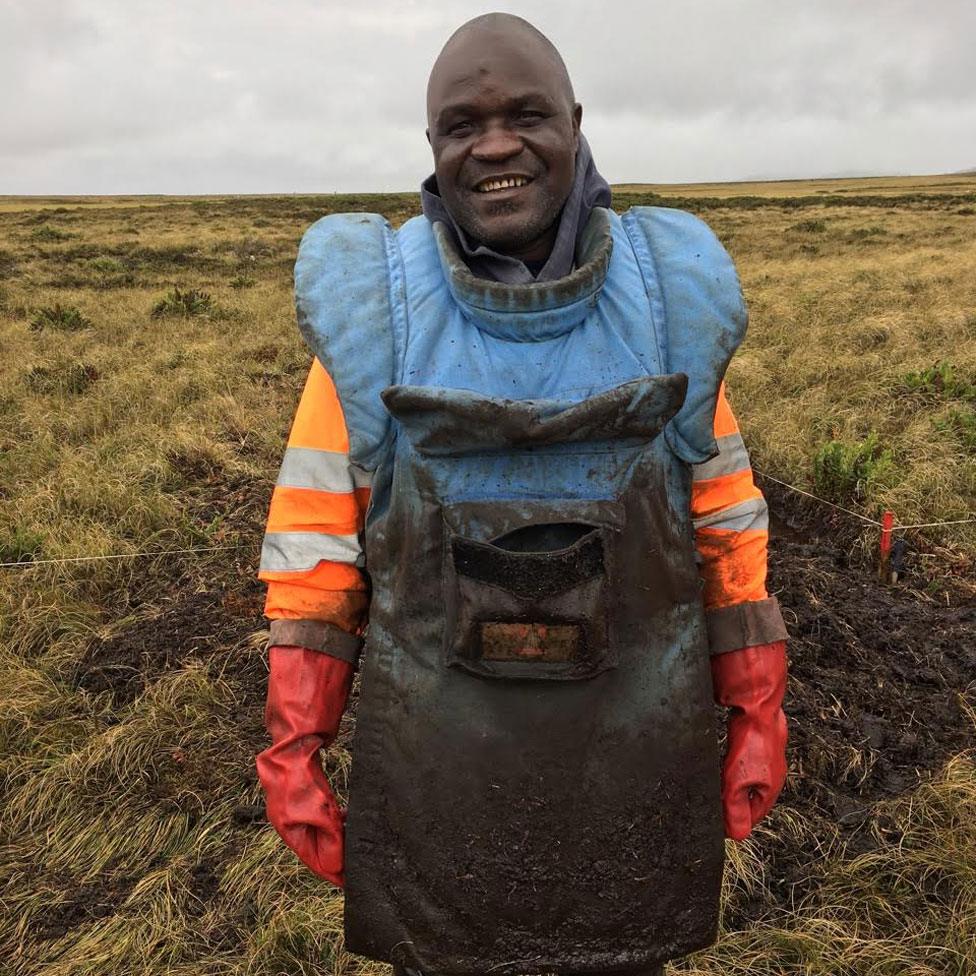
Zimbabwean demining expert Farai Beghede at work on a bleak moorland in the South Atlantic
So far, Mudzamiri and his colleagues have cleared more than seven million square metres of mostly rough countryside. But now, Phase 5 of the demining programme is seeing sensitive sites of environmental concern, such as Yorke Bay, come up for clearance.
The Falkland Islands Government is part of the way through drawing up an environmental impact assessment, examining the risks and benefits from demining wildlife-rich sites.

Find out more
Listen to Exploding Penguins presented by Peter Gibbs and produced by Matthew Teller, on Costing the Earth, at 15:30 on Tuesday 9 May, on BBC Radio 4

Yorke Bay is particularly difficult, since in 1982 mines were placed on top of the sand dunes, but, over 35 years, the dunes have changed shape and shifted with the wind. Even with the detailed charts handed over by Argentina to the UK after the war, it's impossible now to know where the mines might be - they could have drifted far from their original position or become buried deep below the surface.
The deminers are facing having to dig up the entire beach, perhaps with armoured machinery, and sift it all. The idea is to do that during the winter, while the penguins are out at sea. But their habitat, and the wider ecosystem, could be entirely destroyed.
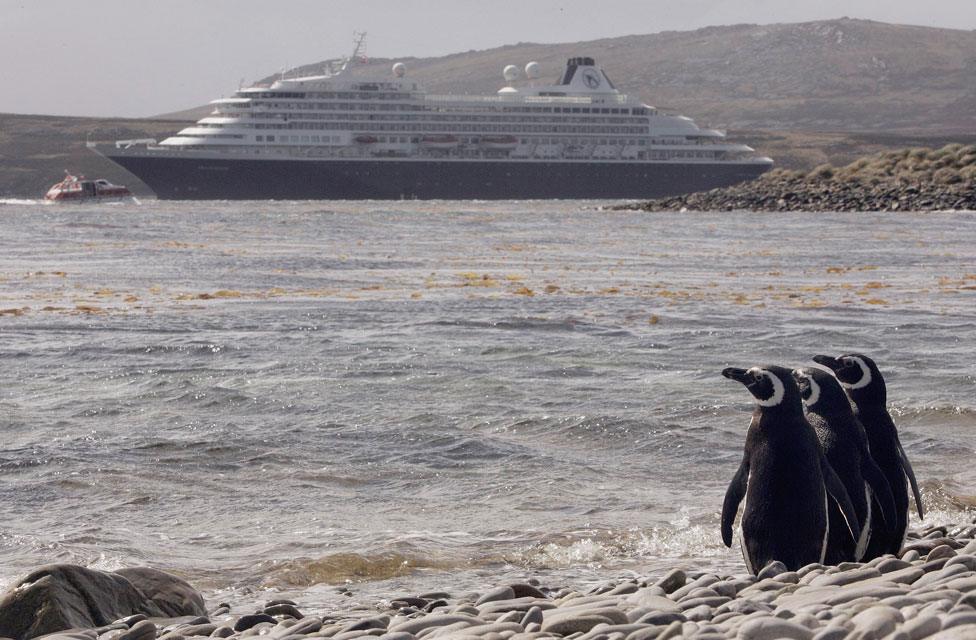
Another potential hazard is tourism, a key driver of the Falklands economy. About 50,000 people visit the islands annually, most of them day-trippers from cruise ships plying the waters around South America and Antarctica.
Each time a cruise ship docks, hundreds of passengers at a time come ashore to see the wildlife. If Yorke Bay is reopened, its easy-to-reach location - barely 10 minutes' drive from Stanley - could make it a magnet for tourist traffic.
Another source of worry comes from the locals. Most beaches in the Falklands are on private land. But Yorke Bay is publicly owned - and opening it up could revive its pre-war status as one of Stanley's most popular getaways. There are already concerns about quad-biking and livestock grazing on public land outside the Yorke Bay fences. Whether the rejuvenated land within the minefield could be protected when the fences come down remains uncertain.
In 2010 Marot oversaw the clearance of Surf Bay, another beach near Stanley, which held 1,800 mines. Today, as locals ramble over dunes and on to its sandy beach to walk their dogs, it's hard to discern the damage that was done.

"The re-establishment is remarkable," says Marot. "The processes used at the time included blowing up the anti-tank mines in situ. The holes here were 10m deep in some places - this was a moonscape. But then we put all the sand back on top, and tried to do it in a way that would allow nature to eventually recover completely, which is what you see now."
So the Falklands is facing a head-on clash between the obligation to clear mines and the imperative for environmental conservation.
Meanwhile the honking jackasses behind the Yorke Bay fences are thriving, ironically because of one of the worst things humanity can do - start a war.
Join the conversation - find us on Facebook, external, Instagram, external, Snapchat , externaland Twitter, external.